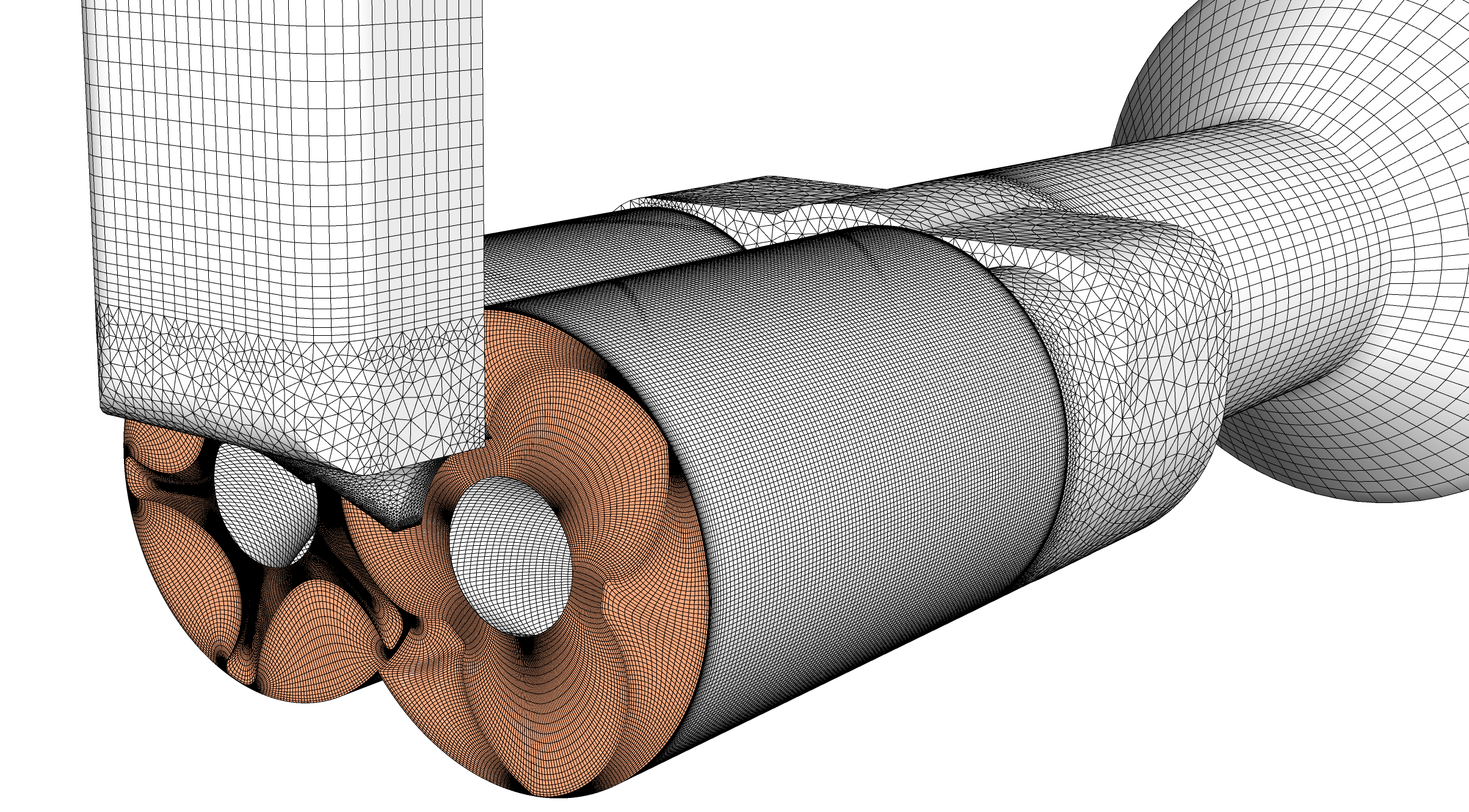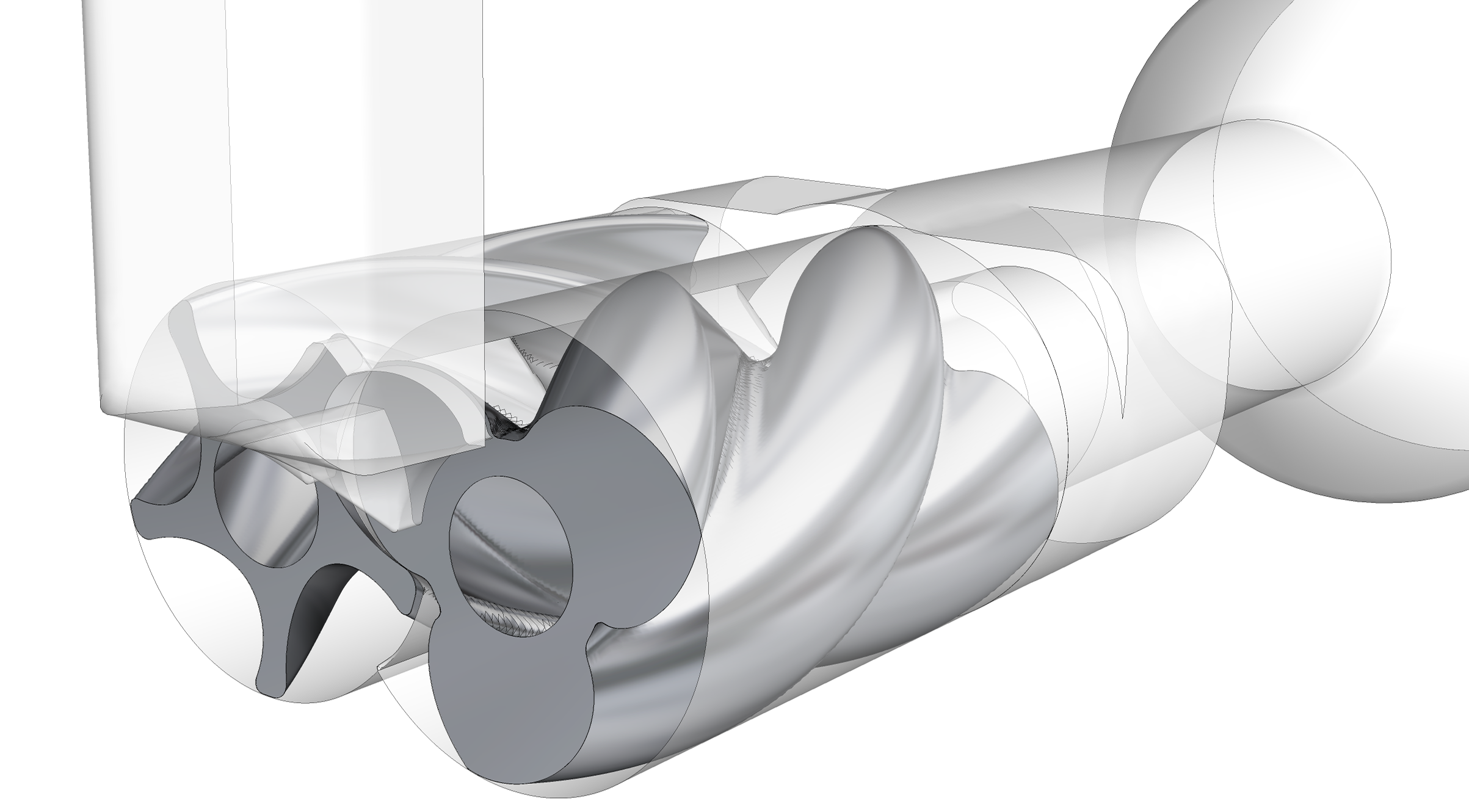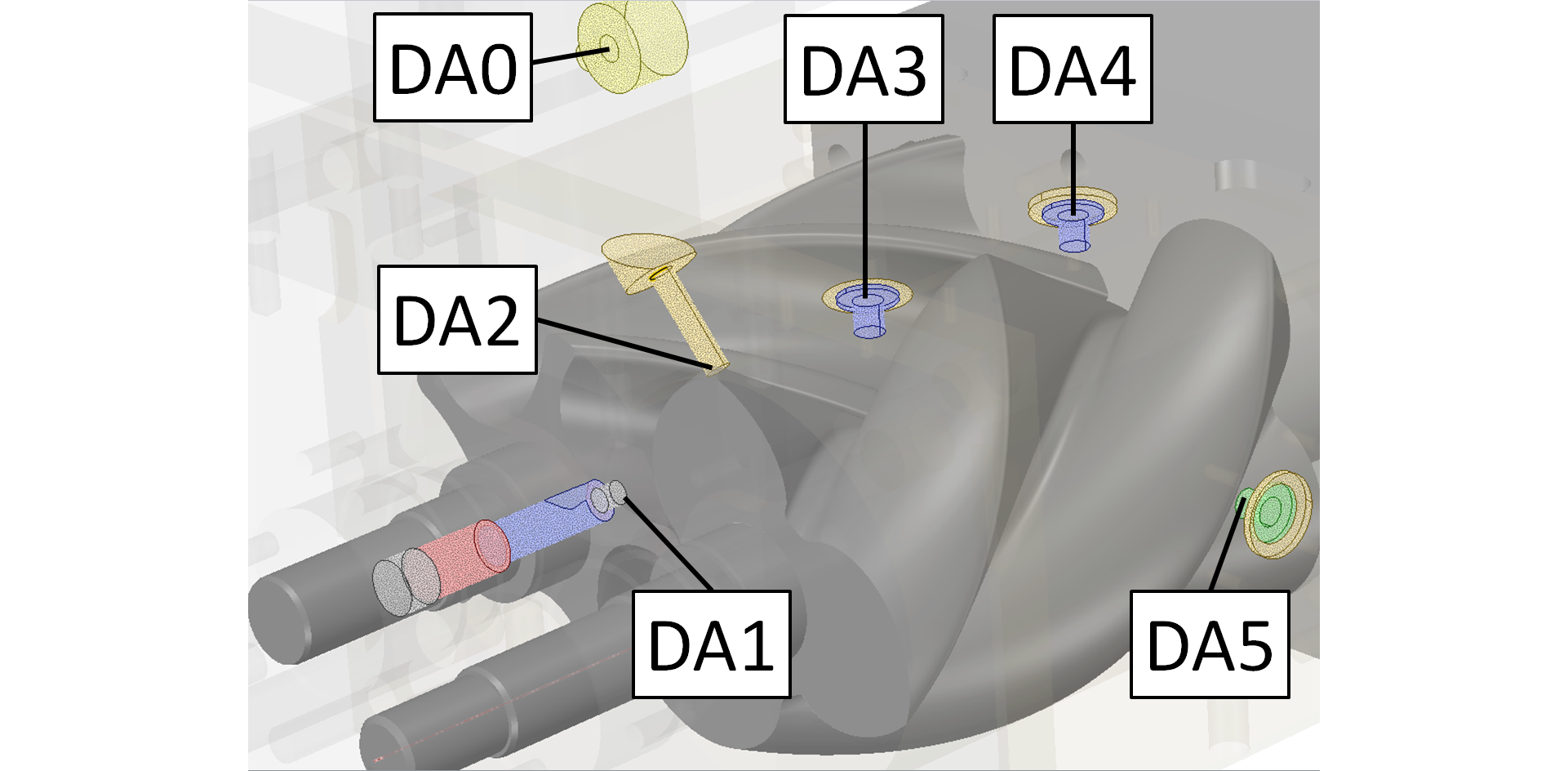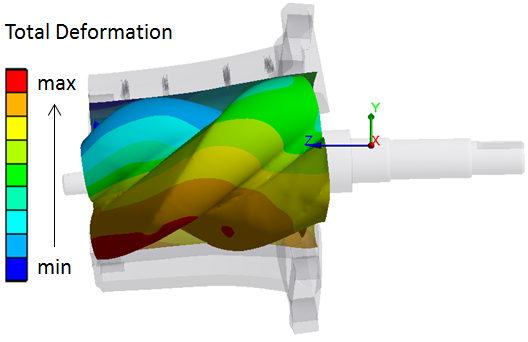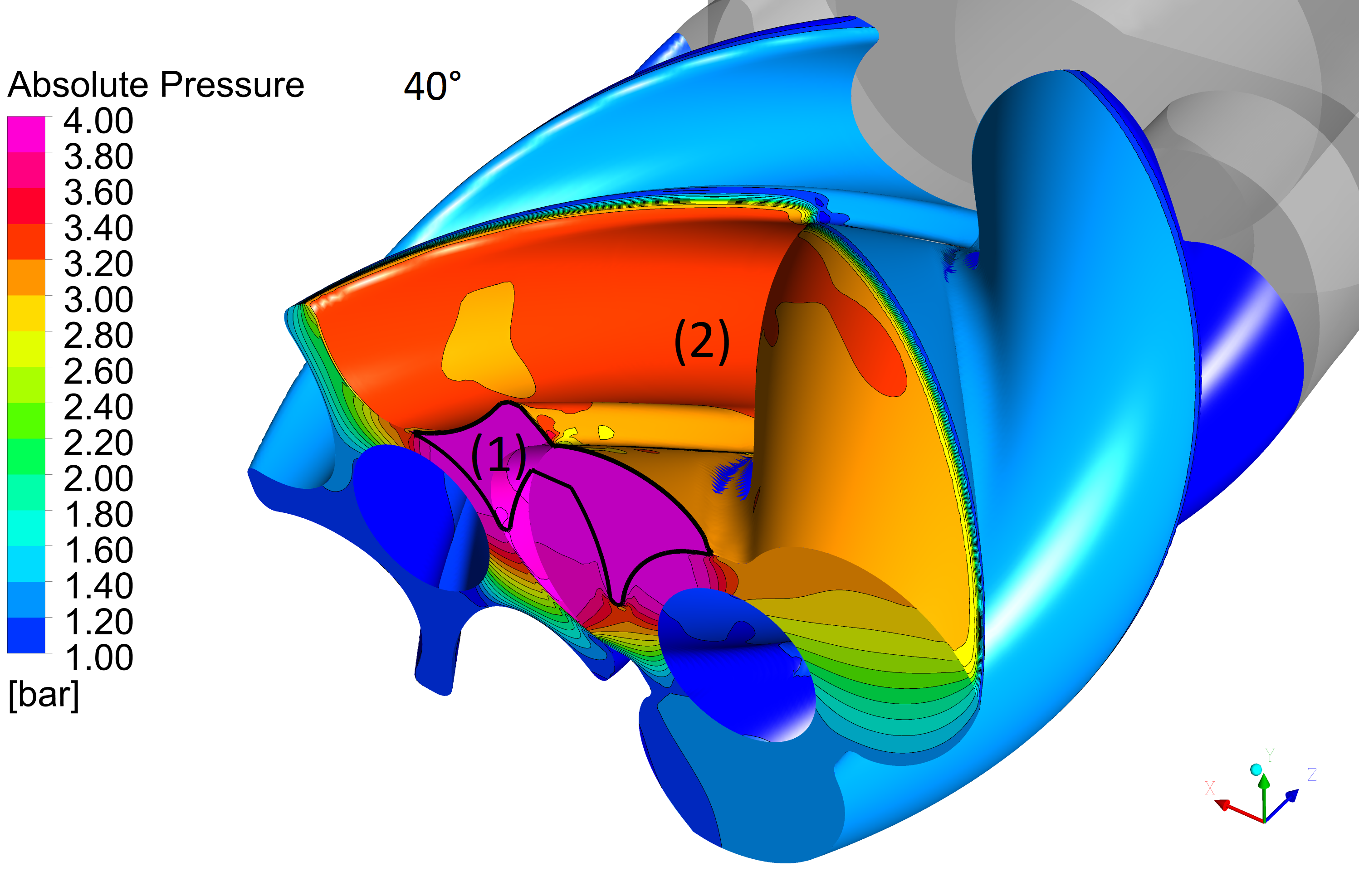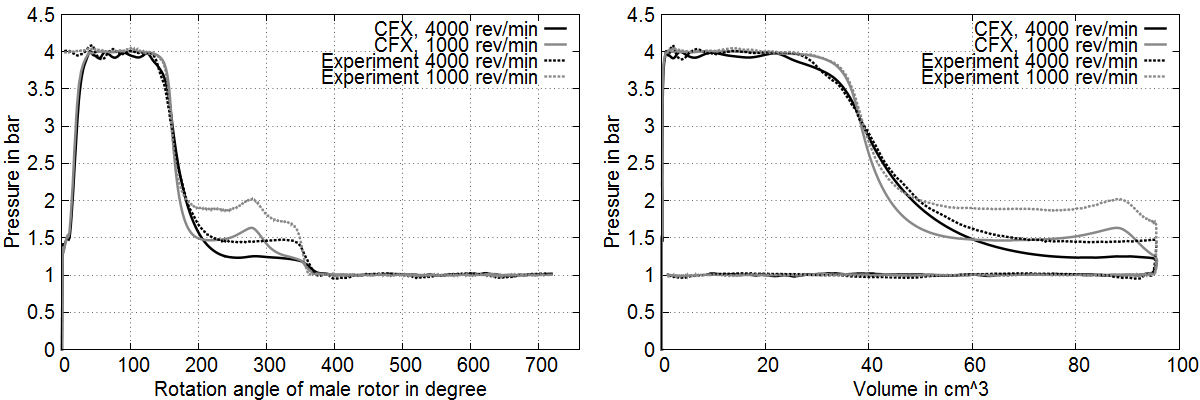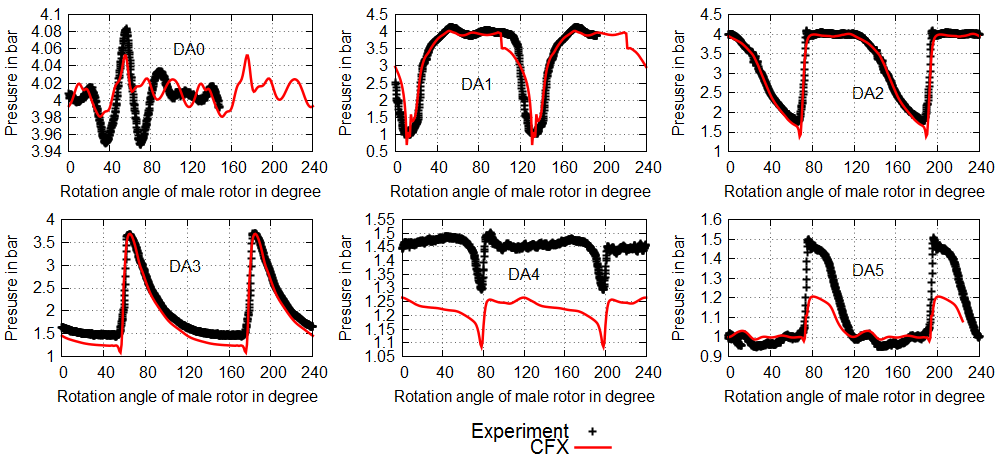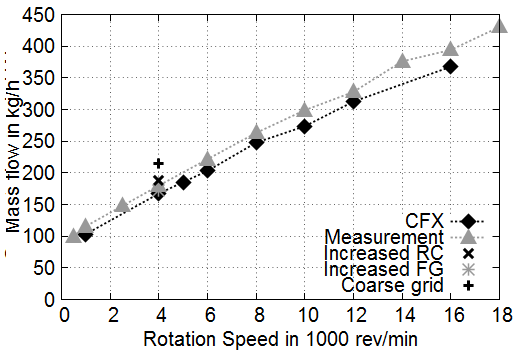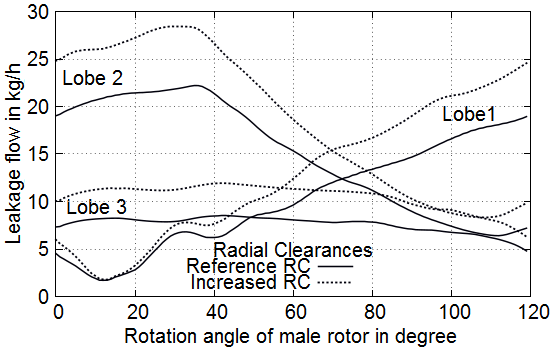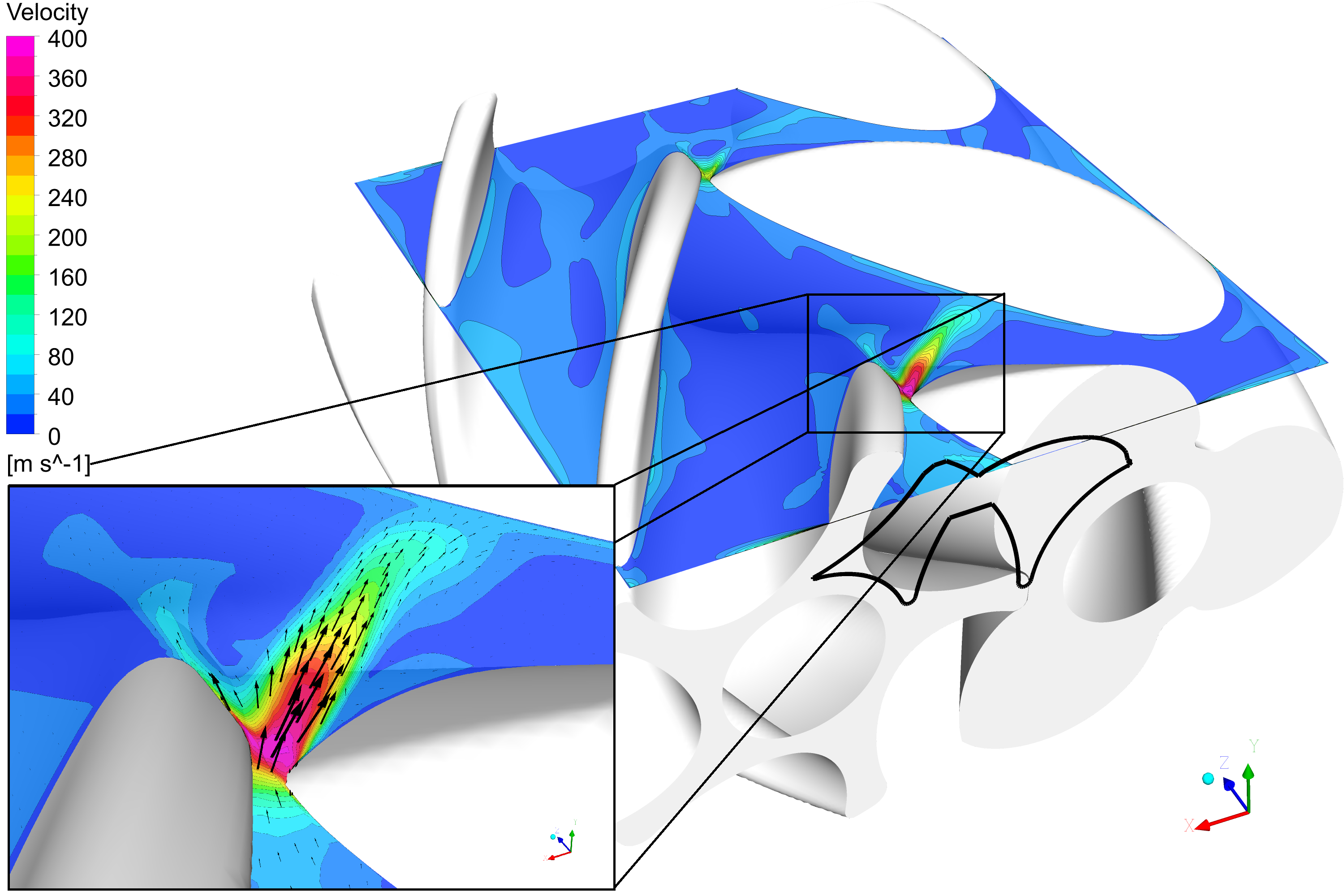The numerical simulation of rotary positive displacement (PD) machines such like a twin screw expander has proven to be a very challenging task characterized by complex geometries with a time dependent change of the chamber volume along with complex flow physics.
In addition, leakage flows caused by housing clearances, front gaps and the intermesh clearance is of particular interest as the resulting losses have a severe impact on the overall machine efficiency. Thus, CFX Berlin had to compare simulation results of a twin screw expander with experimental measurements.
Both, fluid structure interactions as well as multiphase flows are a challenge of upcoming numerical investigations, because the numerical effort is clearly increased, especially with the focus on two-way coupling between fluid and structure.
Furthermore, methods that aim to shorten simulation time are to be elaborated, e.g. applicable initialization of oil injection or the way of coupling dynamics with structural mechanics. For such challenges, there remains the need for reliable experimental data in order to validate the numerical results.
Go ahead and read in detail what we have found out in our latest work.
Paper Abstract:
This paper shows workflow and results for Computational Fluid Dynamics (CFD) simulations of the Screw Expander SE-51.2 of TU Dortmund University, Germany. The simulation is performed using ANSYS CFX whereas the computational grids for the rotary parts are derived from CFX Berlin’s grid generator TwinMesh.
The SE-51.2 is a gearless, dry running twin screw expander that converts thermal energy into mechanical energy by decompressing air with pressure-ratios up to 6:1 and a rotational speed range up to 20,000 rpm.
The volume ratio of the expander is 2.5 at a shaft distance of 51 mm with a displaced volume of 285 cm³ per male rotor revolution. The numerical model of this machine includes fully resolved clearances along with the meshing of the rotor solid end faces whereas a contact point between the rotors is neglected. For several rotational speeds, CFD results are compared to measurements at 4 bar on the high pressure side, expanding air down to 1 bar.
The presented CFD results of the SE-51.2 in comparison with experimental data indicate that the working mechanism and flow conditions within the expander are well captured by the simulation. It accounts for effects like throttling, chamber refilling, or leakage flows. Moreover, examined flow quantities are in overall good agreement with the measurements.
Mostly, CFD easily allows analyzing tendencies like the variation of clearances or changing the operation point. With regard to further investigations, accurate modelling of leakage sources (i.e. all clearances present in the real model) should be treated with particular attention as it severely affects the machine characteristics.
However, neglecting the rotor bearing leakage in the presented numerical model is assumed to considerably contribute for fewer losses compared to the experiment as seen in the pressure volume.
Additionally, the separate quantification of the individual leakages through radial clearances (i.e. housing gap, intermesh clearance, and blow hole) is of interest. The significance of leakage modelling demands for high quality meshes at high resolutions as coarse meshes tend to result in a decreasing accuracy regarding geometry approximation especially in the case of the intermesh clearances of rotary PD machines.
The significant overestimation of the mass flow derived from the coarsened rotor meshes can mainly be caused by an insufficient spatial resolution of clearances.
If you like to read the full paper you can find it here. For those of you who prefer to have a look at a summarized presentation this is available via the following download button.

